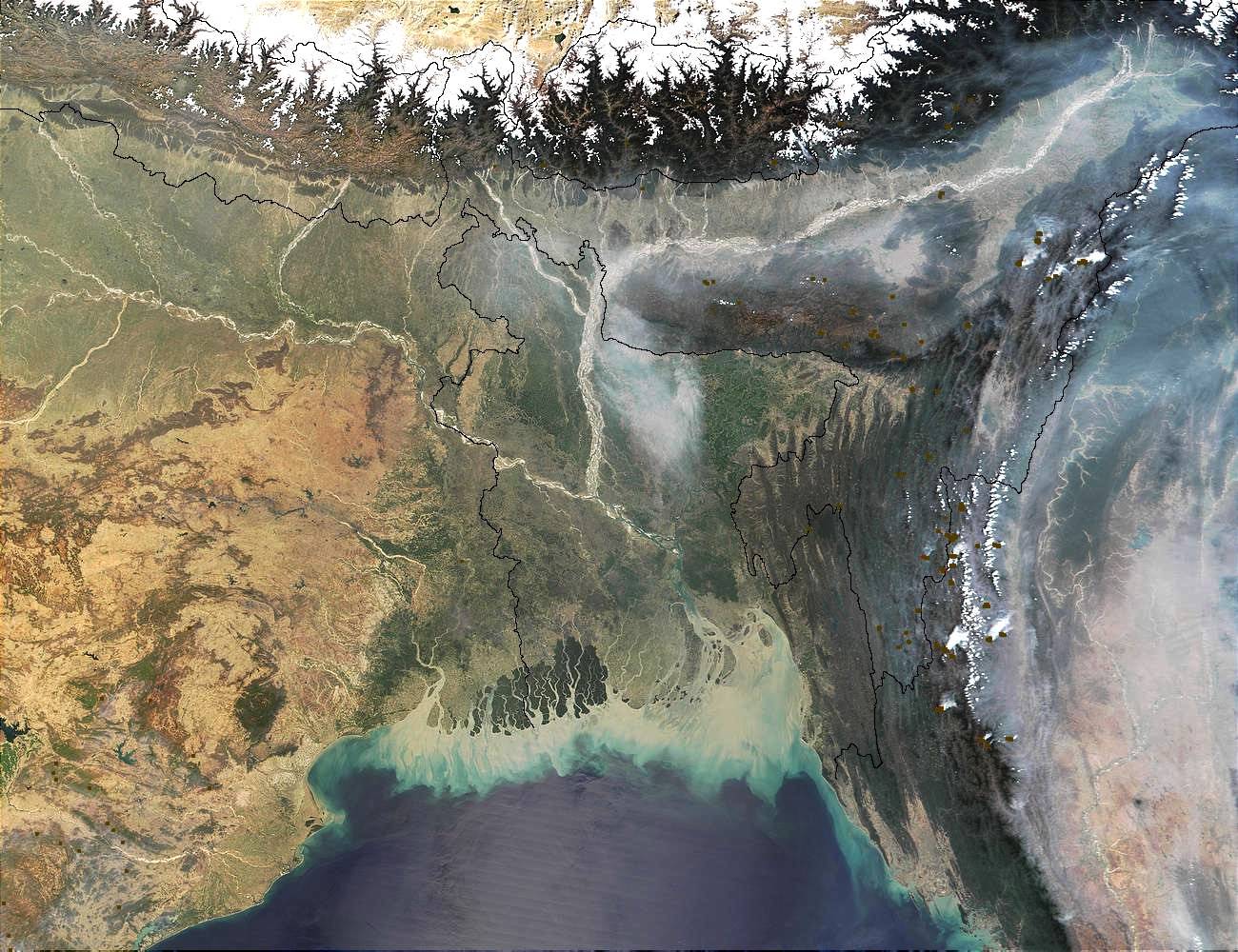Ganges-Brahmaputra River, Bangladesh
 | Funding Agency: NSF Objectives: The study's main objectives were to determine how changing source areas, weathering patterns, and delivery of sediment have influenced development of the Bengal basin under the control of shifting monsoon regimes. Previous NSF-supported studies of the Bengal Basin by the PIs demonstrate that it contains a high-resolution record of Late Quaternary fluviosedimentary signals from the Himalayan catchment, presenting an unparalleled opportunity to understand how dramatic changes in South Asian climate have impacted the sediments and character of a major deltaic sequence. Furthermore, the G-B system provides important insight for river system behavior and stratigraphic responses to climate change, especially for the seven major fluvial systems fed by the Himalayan/Tibetan uplift. |
The main approaches for the overall collaborative study involved:
(1) geochemical, stratigraphic, and paleoenvironmental studies of borehole samples,
(2) conceptual model development for monsoon-affected sediment dispersal systems and,
(3) testing of basin response to changing climate and sediment delivery using state-of-art numerical models.
Methods: Three boreholes were drilled
and samples were collected from areas dominated by Ganges, Brahmaputra, and
mixed inputs, as well as those of fine- and coarse-grained textures, providing a
variety of sedimentary signals and sequences. Strontium and neodymium isotopes,
along with mineralogy, will be used to trace the production and dispersal of
sediment over recent interglacial, glacial, and interstadial periods. Weathering
patterns will be traced using clay mineralogy and stable O and H isotopes.
Radiocarbon and optically-stimulated luminescence dating will be used to
establish a chronology and determine changing accretion rates. These data will
be further correlated with organic Del13C values and a collaborative palynology
study to infer shifting floral communities. Altogether, this multi-proxy
approach will allow us to identify diagnostic geochemical and stratigraphic
signatures in the Bengal Basin that can be related to changing climatic
conditions during the Late Quaternary. Finally, numerical-modeling experiments
using both hydrological and stratigraphic models will allow us to test our
conceptual ideas regarding the influence of Late Quaternary climate change on
river behavior and basin stratigraphy.
Understanding the influence of climate
on the delivery of river sediment to the Bengal margin contributes to our
ability to predict the environmental consequences of climate change in
monsoon-influenced fluviodeltaic settings. In particular, the subsistence
livelihood of Bangladesh's 130 million inhabitants depends largely on
agricultural practices that are sensitive to changes in sediment delivery,
flooding patterns, and erosion/accretion cycles of lowland and coastal areas. In
addition, mediation of the country's current groundwater arsenic crisis may
hinge on a more complete understanding of the mineralogy and geochemistry of
subsurface aquifers.

